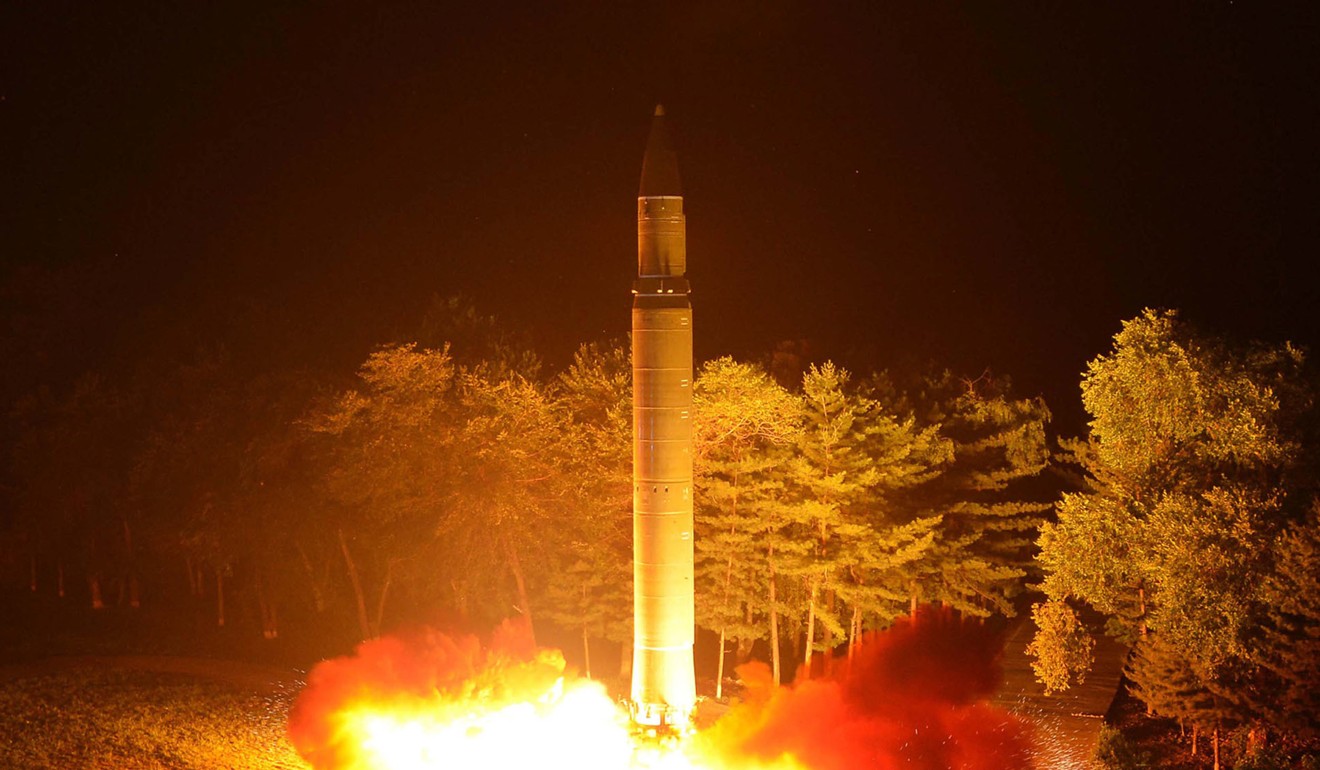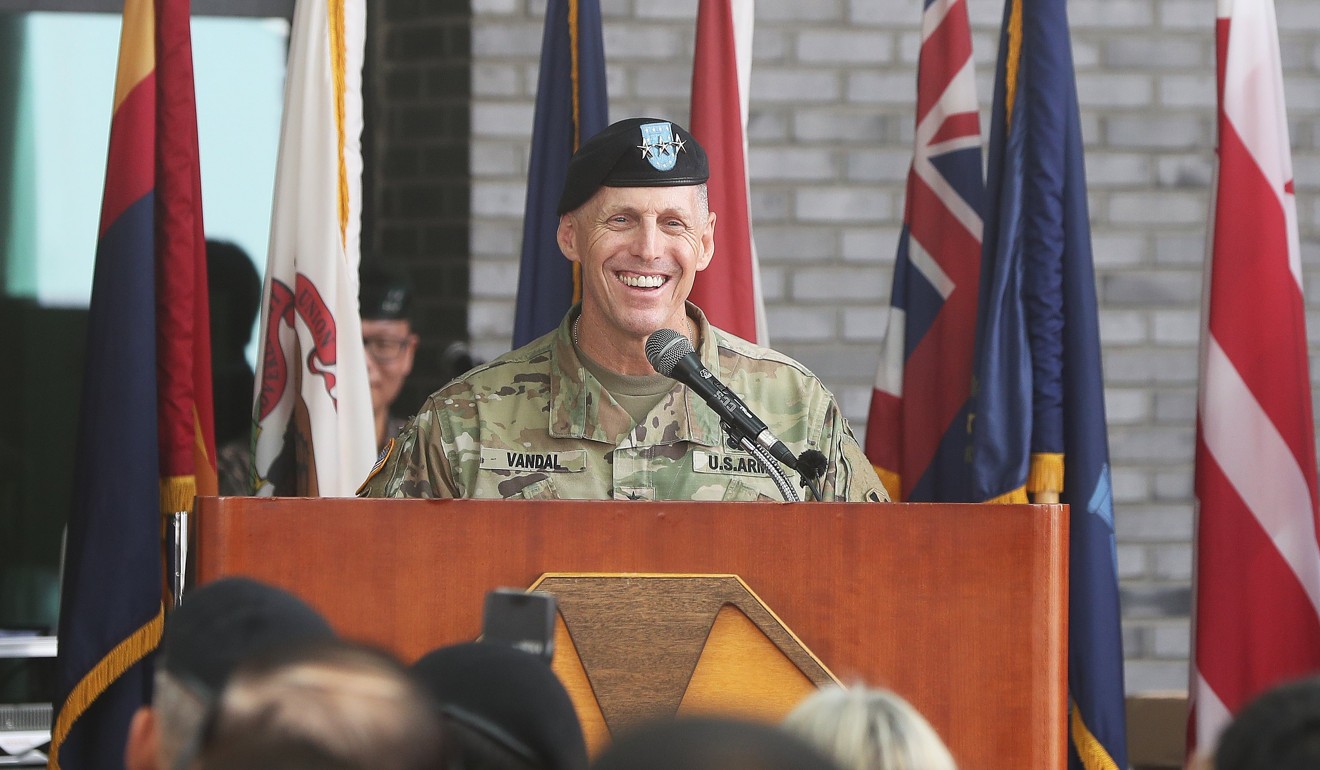
Life on base: United States nears completion of US$11 billion Camp Humphreys military base in South Korea as threat from the North intensifies
The Western nation’s military has been trying for 30 years to move its headquarters out of Seoul and out of Kim Jong-un’s artillery range
This small American city has four schools and five churches, an Arby’s, a Taco Bell and a Burger King. The grocery store is offering a deal on Budweiser beer as the temperature soars, and out front there’s a promotion for Ford Mustangs.
But for all its invocations of the American heartland, this growing town is in the middle of the South Korean countryside, in an area that was famous for growing huge grapes.
“We built an entire city from scratch,” said Colonel Scott Mueller, garrison commander of Camp Humphreys, one of the US military’s largest overseas construction projects. If it were laid across Washington, the 3,454-acre base would stretch from Key Bridge to Nationals Park, from Arlington National Cemetery to the Capitol.

“New York has been a city for 100-some years, and they’re still doing construction. But the majority of construction here will be done by 2021,” Mueller said.
Since the end of the second world war, the military has been based at Yongsan, a garrison that had been the Imperial Japanese Army’s main base during Japan’s occupation of the Korean Peninsula. It is in the middle of Seoul and just 40 miles from the demilitarised zone that separates the two Koreas.
The South Korean and American governments have been talking since 1987 about moving the headquarters away from Yongsan, but political and funding issues slowed the process. Protests broke out about a decade ago when Pyeongtaek, a rural city 64km south of Yongsan, was chosen as the new site.

The larger the US military base is, the more effectively our military can hit its targets
Now, the US$11 billion base is beginning to look like the garrison that military planners envisaged decades ago.
The 8th Army moved its headquarters here this month, and there are about 25,000 people based here, including family members and contractors.
There are blocks of flats, sports fields, playgrounds, a water park and an 18-hole golf course with the generals’ houses overlooking the greens. There is a “warrior zone” with gaming consoles, pool tables and dart boards, and a tavern for those old enough to drink.
Starting in August, there will be two junior schools, a middle school and a high school. A new, 68-bed military hospital to replace the one at Yongsan is also close to completion. All that is in addition to the airfield, tank training areas and firing ranges.
When it is finished, the base will be able to house precisely 1,111 families and about 45,500 people.
But it’s not just bigger. The base is also much more modern than the garrison at Yongsan, Mueller said. It has state-of-the-art communications technology and is a more “hardened” site to protect against a possible North Korean attack.
“Down here we’re a little bit further from the action, and that helps buy us some strategic decision space should anything happen,” Mueller said. “We’ve been able to create the facilities needed to keep up with the pace of modern warfare and modern communications technology.”
Although recent concerns about North Korea have centred on its rapidly evolving ballistic missile capability, Kim Jong-un’s also has a huge amount of conventional artillery lined up on its side of the border that would be able to inflict significant damage on Seoul in a short time. It is this concern that has restrained American presidential administrations from launching a pre-emptive strike on North Korea’s nuclear weapons facilities.

But the new Camp Humphreys is out of range of the North’s multiple rocket launchers – although that hasn’t stopped the North Koreans from making threats.
“The larger the US military base is, the more effectively our military can hit its targets,” a North Korean military spokesman said this month after the 8th Army moved here, according to the North’s Korean Central News Agency.
Under an agreement with the South Korean military, one US army brigade will remain at Camp Casey, right near the DMZ, after the Yongsan garrison has closed.
The construction of Camp Humphreys also raised hopes for the local economy, which had not exactly been flourishing before the area was selected for the garrison.
Local authorities have built a US$13 million train station and a new four-lane highway bridge, and invested US$55 million into a new substation to deliver power to the base. The main roads in Pyeongtaek are lined with new blocks of flats towers.
Immediately outside the base, local businesses are vying to prove how pro-American they are. There are dozens of real estate agencies with American flags on their windows and names such as “Komerican Realty”. One of the new housing estates outside the base is called “Lincoln Palace”, another “Capitolium”.
The parking spaces in the developments have been made bigger, to fit American cars, and there are restaurants offering all-you-can-eat Korean dinner buffets for US$11, or Tex-Mex joints and even a Hooters knock-off. The barbershop offers haircuts typically associated with the military, such as “flat-tops” and “skin fades”, while others provide “All African American Caribbean style” hair braiding.
There’s too much competition now, and we have to share the limited amount of business
Because soldiers below the rank of staff sergeant are not allowed to drive in South Korea, even off base, young Americans on bicycles rigged with small motors sputter through the streets.
But there is a sense of frustration that the base hasn’t produced a gold rush.
“Business is so-so,” said Suh Hee-yeon, the owner of one US Forces Korea-approved real estate agency on the main drag, which offers housing for those who will live outside the base. She has been here for a decade and doesn’t welcome the new firms that have arrived as the garrison nears completion. “There’s too much competition now, and we have to share the limited amount of business,” she said.
Some here worry about increased crime and that American soldiers will be on the prowl for local women. The US army has developed an app so troops can check which bars have been deemed off-limits, either because they’ve been caught serving drinks to minors or because they’re selling sex.
Others complain that the new arrivals don’t learn Korean and expect local store owners to speak English.
But worse is the fear that soldiers just won’t patronise their businesses.
“They rarely come out from their bases,” said Park Jong-ho, who has run a shoe shop here for the past three years. “They have everything they need there on the base.”

